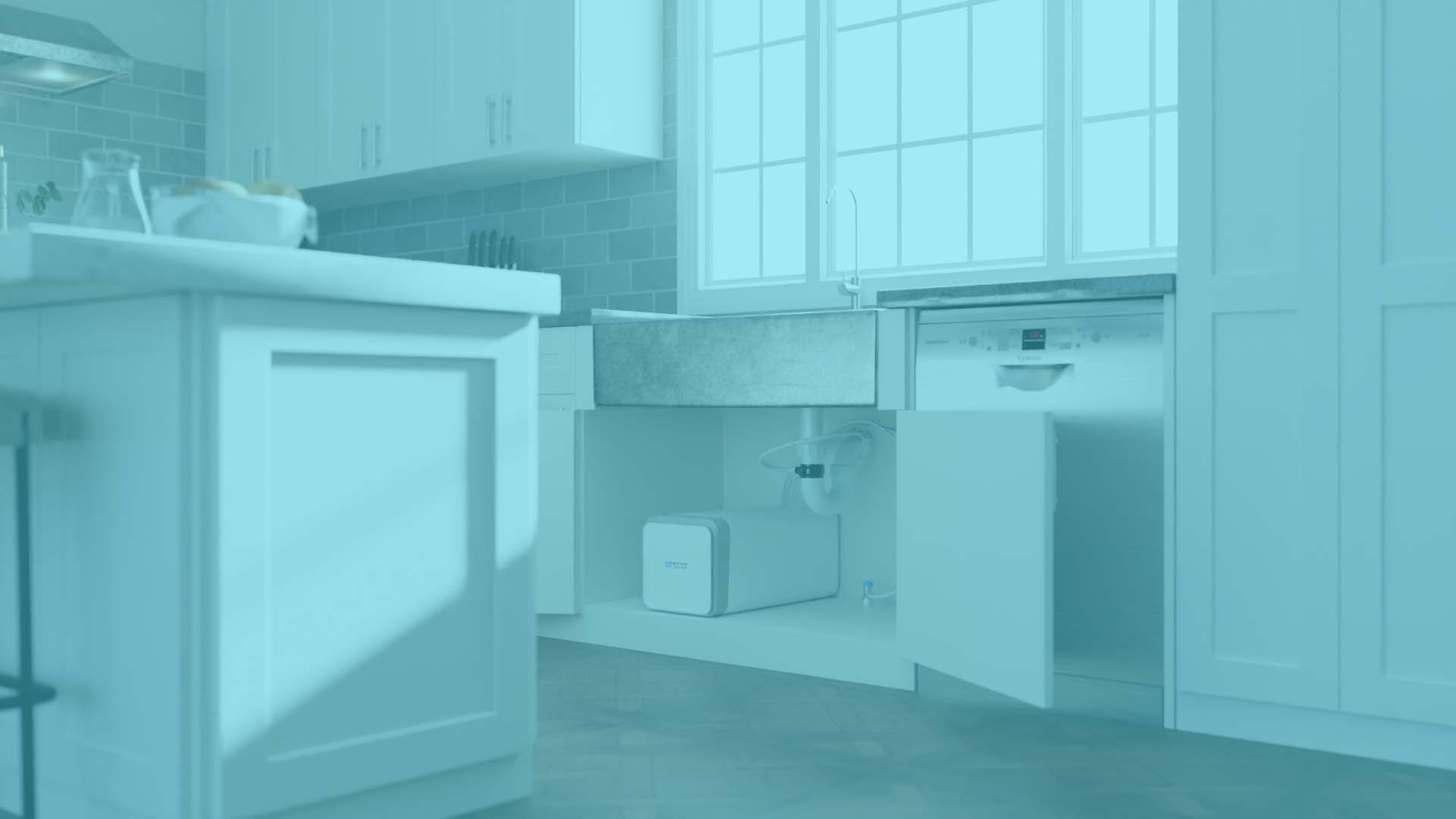
The Complete Guide to Tankless Reverse Osmosis Systems

Aside from the physical size and requirement of a tank, both tankless systems and those that use tanks function in the same way: your tap water passes through each filter inside of the system to help clean it beyond simple carbon filters. In fact, they have identical filters, from carbon block filters that help with large particles, to GAC filters and RO membranes that help scrub your water of bad tastes and smells.
While there some pretty important advantages tankless systems have over systems that use them, at the end of the day they operate in the same way. Their similarities are what make them great for any household, but their differences are what make tankless RO systems great for every household.
Horizontal (Sitting) Tankless Reverse Osmosis Systems like theNU Aqua Efficiency Series Tankless Reverse Osmosis Systemlay on the floor under your sink and only take up around8x8x12in.(LxWxH) of space. With front loading filter cartridges, these systems are perfect for any household, whether you’ve got plenty of room underneath your sink or just enough.
Vertical (Standing) Tankless RO Systems like those you find from Waterdrop stand up straight like standard RO systems, but they’re only around17x6x14in. These systems are great if you have at least 16” of space under your sink. From there, all you need is about 7” of room between the system and your plumbing, which is pretty standard for most households. Their filter configuration can vary from system to system, but mostly come in two styles:
Front loaded cartridgeslike those inhorizontal tankless reverse osmosis systems.
Top loaded cartridgeslike those invertical tankless reverse osmosis systems that require you to remove the top of the system to replace the filters.
Technically, countertop filters or whole house filters as “tankless” systems. While these are technically tankless by nature, they're not what we're referring to here


Booster Pump Ensure Consistent Water Flow
Most- if not all- tankless RO systems have booster pumps, too. If your water pressure isn’t so great, it’ll take a while for it to be filtered through each filter, slowing the rate it comes out of your faucet. Worse, without the right pressure, your filters won’t be able to do their job as efficiently, so your water may not be as filtered as it could be at higher speeds. Tankless systems already have them installed, so you’ll get the filtration you expect at a flow rate that’ll please anyone.
Filters Can Be Changed In Seconds
Structurally, tankless RO systems are much easier to work with than other systems. Most tankless systems have a cover you flip up or remove to gain access to filters. When changing filters out, all you do is twist to unlock them and click into place when you’re finished. Compare that to other RO systems that require special tools to take off thick filter housings, you’ll find tankless filters are exponentially easier to swap out when the time comes.


More Room Under Your Sink
Not only do tankless systems save room under your sink, their size is what facilitates the other advantages of these systems. Tank systems take longer for water to pass through each filter, which hinders the speed you receive water, and ultimately how much water you receive in each day. By being so compact and removing the need of a tank, these systems streamline the reverse osmosis process and send filtered water straight to your tap faster than ever.
Learn More2:1 Pure To Wast Ratio
Systems with tanks take in lots of water in order to fill a single tank. Once that tank is full, the rest of the water that isn’t filtered is then sent to the drain line and flushed out. If you filter lots of water but only a limited amount of it can be stored, you end up wasting a majority of the water you just filtered, along with the contaminants you just filtered out.
Tankless reverse osmosis systems, on the other hand, only direct waste to your drain line. That means nearly every drop of tap that enters the system is filtered and comes out of the faucet.






